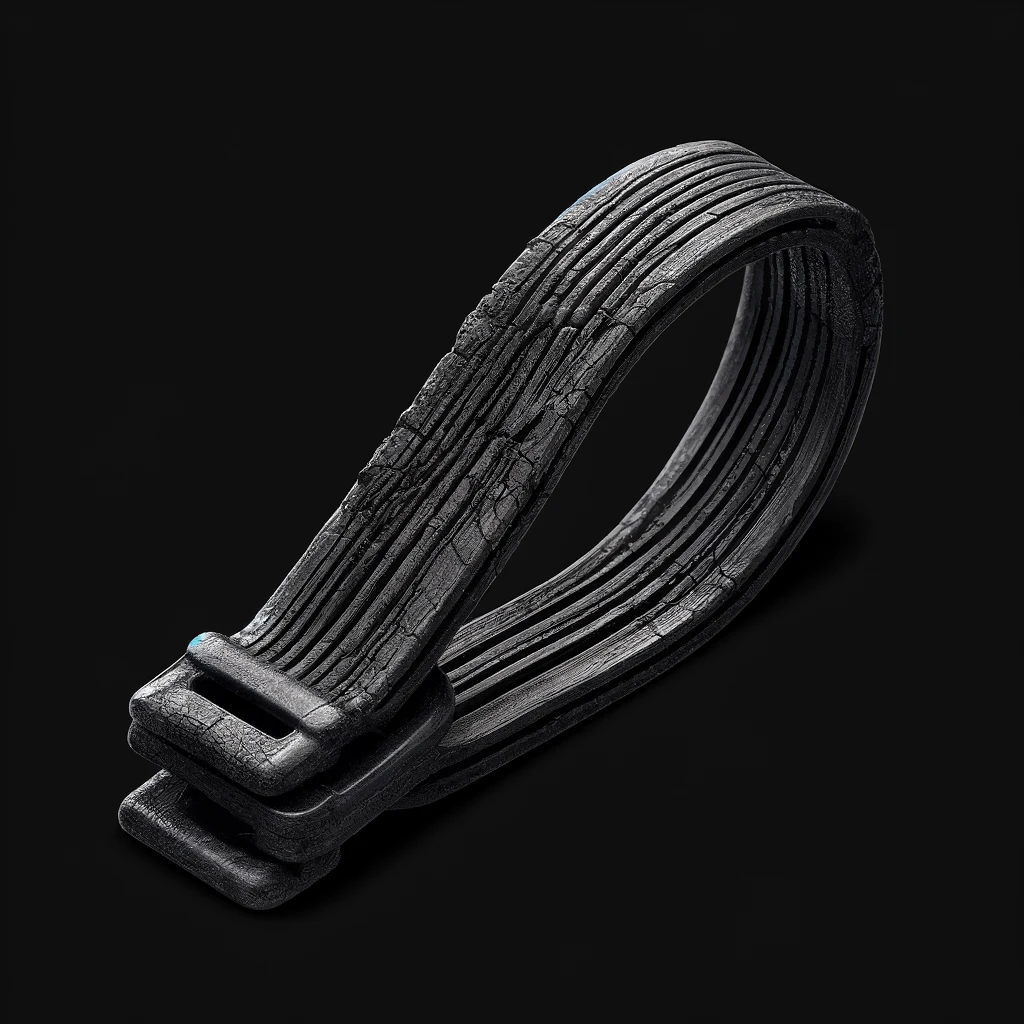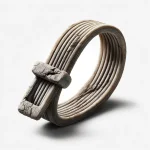Cable ties are an essential tool for organizing and securing wires, cables, and other objects. They're versatile, affordable, and easy to use. However, like any other product, cable ties have a limited lifespan and can deteriorate over time, especially when exposed to harsh environmental conditions. We want to share with you the five telltale signs that indicate it's time to replace your old, brittle cable ties.
1. Visible Cracks and Fractures
One of the most obvious signs that your cable ties need replacement is the presence of visible cracks and fractures. These can occur due to prolonged exposure to UV radiation, extreme temperatures, or chemical agents. When you notice cracks or fractures on your cable ties, it's a clear indication that their structural integrity has been compromised.
Ignoring these signs can lead to sudden breakage, which can cause cables to become loose or disconnected. This not only creates an unsightly mess but also poses a potential safety hazard, especially in industrial or automotive settings where loose cables can interfere with moving parts or cause short circuits.
2. Loss of Flexibility
Another sign that your cable ties are nearing the end of their lifespan is a loss of flexibility. When cable ties are new, they are pliable and easy to manipulate, allowing you to create tight, secure fastenings. However, as they age and become brittle, they lose their flexibility and become more difficult to work with.
If you find yourself struggling to tighten or adjust your cable ties, or if they feel stiff and unyielding, it's a good indication that they have lost their flexibility and need to be replaced. Using brittle cable ties can result in improper fastenings, which can lead to loose or dangling cables.
3. Discoloration and Fading

Cable ties are often made from nylon or other polymers that are susceptible to discoloration and fading when exposed to sunlight or other UV sources. While some discoloration may not necessarily affect the performance of the cable tie, it can be an indicator of underlying material degradation.
If you notice that your cable ties have significantly changed color or have become noticeably faded, it's a good idea to replace them. Discoloration and fading can be signs that the cable tie has been weakened by UV exposure, making it more prone to breakage or failure.
4. Difficulty in Insertion and Removal
Over time, the locking mechanism of a cable tie can become worn or damaged, making it difficult to insert or remove the tie from its fastening point. This can be frustrating and time-consuming, especially if you need to make frequent adjustments to your cable management system.
If you find yourself struggling to insert or remove your cable ties, or if the locking mechanism seems to be malfunctioning, it's a clear sign that they need to be replaced. A faulty locking mechanism can lead to insecure fastenings and potential cable damage.
5. Age and Environmental Factors
Even if your cable ties don't exhibit any of the above signs, it's important to consider their age and the environmental factors they've been exposed to. Cable ties that have been in use for an extended period or have been subjected to harsh conditions such as extreme temperatures, humidity, or chemical exposure may need to be replaced as a precautionary measure.
As a general rule of thumb, it's a good idea to inspect your cable ties regularly and replace them every few years or sooner if they show signs of wear and tear. This proactive approach can help prevent unexpected failures and ensure the longevity of your cable management system.
Tips for Dealing with Brittle and Old Zip Ties
Over time, exposure to various environmental factors can cause the ties to become brittle and less effective. Here are some tips to help you deal with brittle and old zip ties and ensure that your fastening needs are met efficiently and safely.
1. Understand the Causes of Brittleness
Before tackling the issue of brittle zip ties, it’s essential to understand what causes them to deteriorate. Common factors include:
- UV Exposure: Prolonged exposure to sunlight can degrade the plastic, making it brittle.
- Temperature Extremes: Both high and low temperatures can affect the flexibility and strength of zip ties.
- Chemical Exposure: Certain chemicals can weaken the plastic material, leading to brittleness.
- Age: Over time, even without extreme exposure, the material can naturally degrade.
2. Regular Inspection
To prevent failure during critical applications, regularly inspect your zip ties. Look for signs of wear and tear, such as:
- Cracks or splits in the plastic
- Discoloration or fading
- Stiffness or lack of flexibility
By identifying compromised ties early, you can replace them before they fail.
3. Proper Storage
Proper storage can significantly extend the life of your zip ties. Here are some storage tips:
- Avoid Direct Sunlight: Store zip ties in a cool, dark place to prevent UV damage.
- Temperature Control: Keep them in a temperature-controlled environment to avoid extremes.
- Away from Chemicals: Store them away from chemicals and solvents that could cause degradation.
4. Use UV-Resistant Zip Ties
For outdoor applications, opt for UV-resistant zip ties. These are specifically designed to withstand prolonged exposure to sunlight without becoming brittle. They are typically black and contain UV stabilizers that protect the plastic.
5. Choose the Right Material
Zip ties come in various materials suited for different environments:
- Nylon 6/6: Standard zip ties, great for general use.
- Nylon 6/6 UV Stabilized: Ideal for outdoor use with UV protection.
- Heat Stabilized Nylon: Designed for high-temperature environments.
- Flame Retardant Nylon: Suitable for applications where fire resistance is crucial.
Choosing the right material for your specific needs can prevent premature brittleness.
6. Replace Regularly
Even with proper storage and the right material, zip ties will eventually degrade. Regularly replace zip ties, especially in critical applications, to ensure reliability. It’s better to be proactive and replace them before they fail rather than dealing with the consequences of a broken tie.
7. Handle with Care
When dealing with old and brittle zip ties, handle them gently to prevent them from snapping. If you need to cut them, use sharp scissors or a utility knife to avoid applying too much pressure, which could cause them to break prematurely.
8. Alternative Fastening Solutions
If you frequently encounter brittle zip ties, consider alternative fastening solutions such as:
- Velcro Straps: Reusable and adjustable, ideal for temporary or adjustable applications.
From our blog: Efficient Velcro Cable Management Solutions for Trade Shows with Cable Ties
- Metal Cable Ties: More durable and resistant to environmental factors.
Read more: Ty23mx: Streamlining Cable Organization in Office IT Setups with Stainless Zip Ties
- Reusable Zip Ties: Designed to be reused multiple times, reducing waste and cost over time.
Learn more: Exploring Reusable Cable Ties: A Comprehensive Guide
Wrapping Up
Cable ties are a crucial component of any cable management system, but they are not indestructible. By looking for these five signs of wear and tear, you can ensure that your cable ties are always in top condition and performing at their best.
Remember to inspect your cable ties regularly. Don't hesitate to replace them if you notice any visible cracks, loss of flexibility, discoloration, difficulty in use, or if they've reached the end of their lifespan. By doing so, you can maintain a safe, efficient, and organized cable management system.
Stay tuned for our next blog post, and check out cabletiesunlimited.com for the best zip ties on the market!

